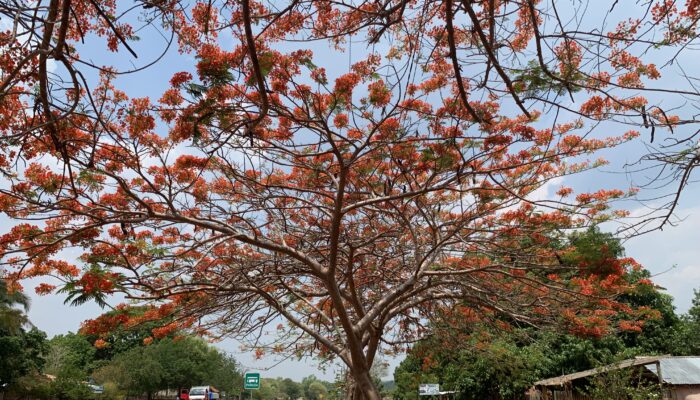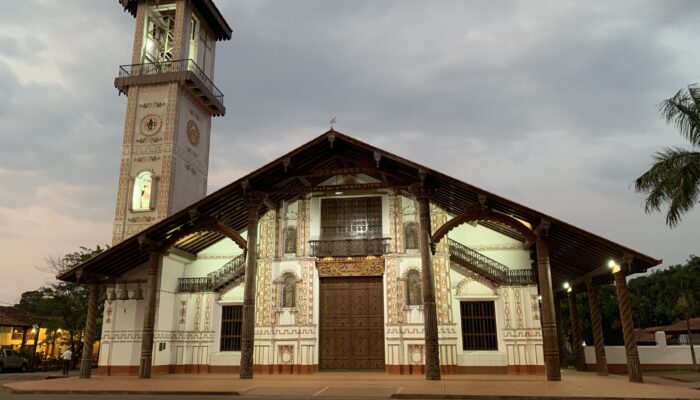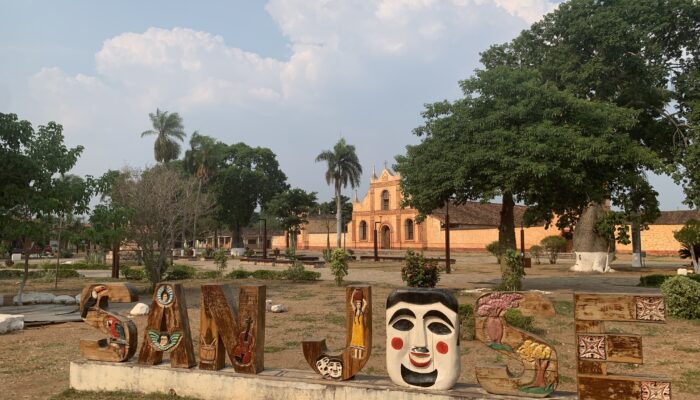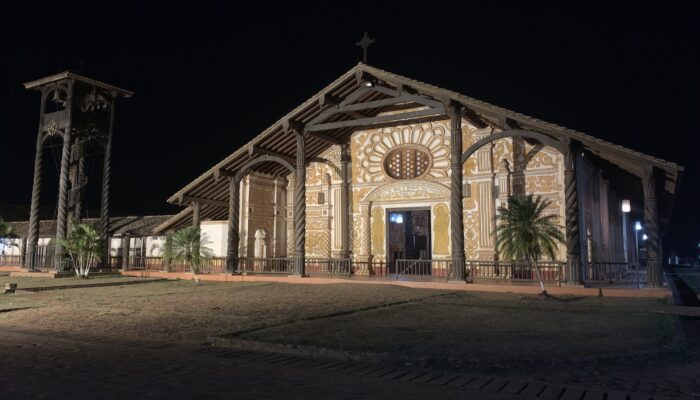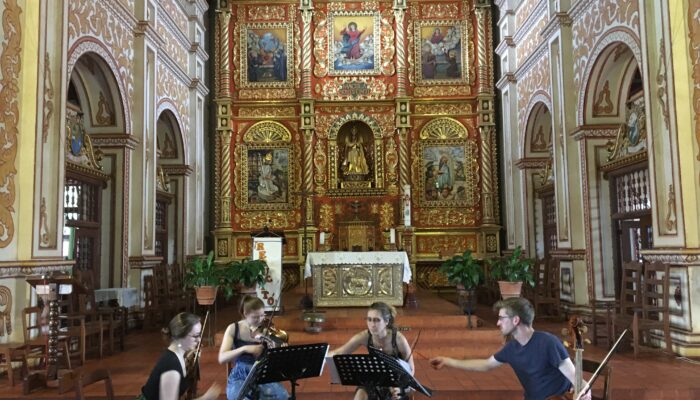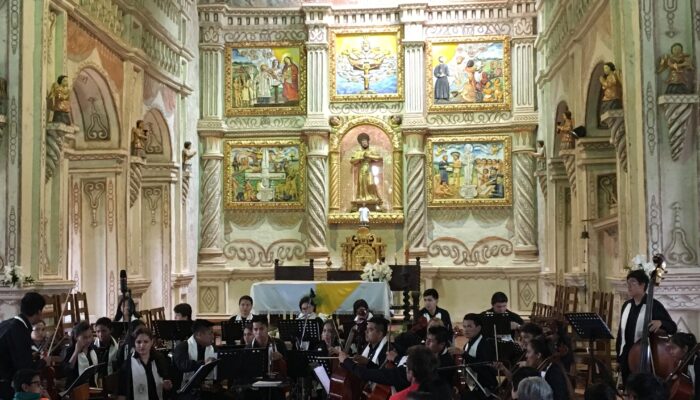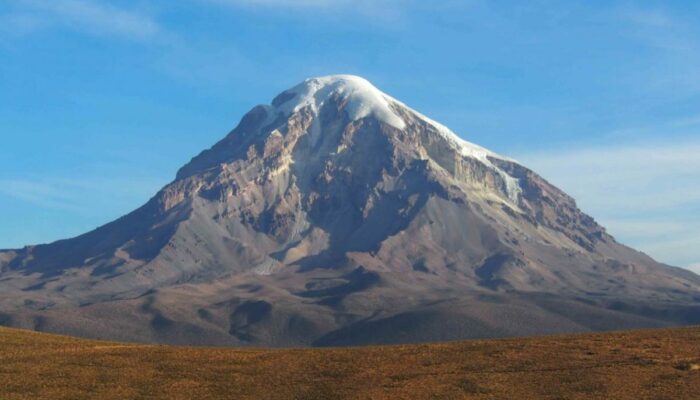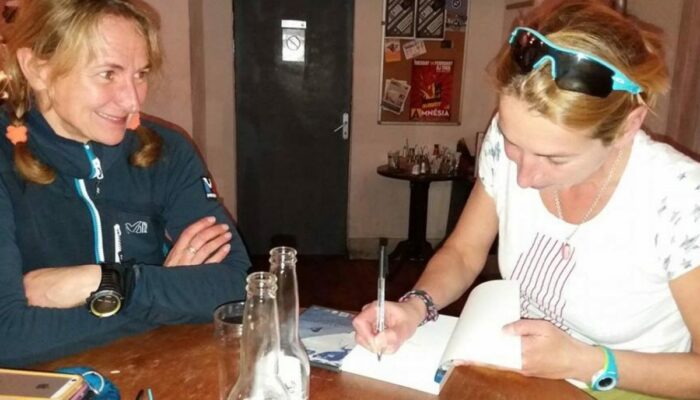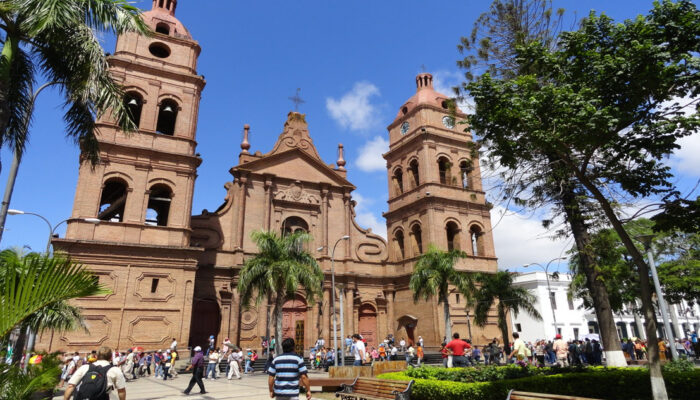In August, Thaki Voyage invites you to learn more about Bolivia’s history by exploring the countless treasures left behind by the Jesuits during their evangelization missions.
Known as the Jesuit Missions of Chiquitos for the remote region of Chiquitanía in which they are located, these missions correspond to a group of localities where Catholic religious communities were founded.
As you explore the villages and churches of this territory, this tour will take you to many gems, including the International Baroque Music Festival, where sublime traditional concerts are held. Whether you are a lover of architecture or art, this trip is sure to move you!
The origins of Jesuit projects during Spanish colonization
Imagine traveling through the Chiquitanía region in the northern department of Santa Cruz and discovering its contrasting landscape, composed of both the complex terrain of the Chaco and the tropical jungle of the Bolivian Amazon. This flatland area lies on the border between Brazil and Paraguay.
It was in the 17th century that the Spanish discovered this spectacular natural environment, which then became the cradle of Jesuit settlements in Bolivia. At the time, this little-explored area was still mysterious and wild to Europeans, who were sent by the Spanish monarchy with a specific goal: to evangelize the inhabitants. They were also tasked with teaching them agricultural and architectural techniques.
In order to ensure optimal coexistence with the indigenous communities, the Jesuits set up an organizational system in which the missionaries administered the colony alongside a few locals. Every day, they met to assess the progress of the mission. However, the indigenous people were light years away from being equal to the priests. In fact, slavery was the norm if they refused to submit to the rules of the community.
Although the missions, also known as reducciones, expanded greatly over several decades, political strife in Europe undermined their work, and the Jesuits were expelled in 1767 by order of King Charles III. With the abandonment of these settlements, the region was forgotten for two centuries before being rediscovered, along with its many historical and cultural treasures, which have been listed as UNESCO World Heritage Sites since 1990.
Discovering the extraordinary decoration of Baroque architecture
Among the gems left behind by the Jesuits, discover the region’s remarkable churches, including the church of Concepcion. The Catedral de la Inmaculada Concepción de María, built between 1753 and 1756, is one of the most ornate churches on the route. Both the altarpiece and the wooden bell tower are magnificent. This mission, founded in 1709, is located in the heart of an agricultural region.
We also invite you to visit the church of the San José de Chiquitos mission, established in 1697. This stone building, dating from 1731, is similar to those of neighboring missions, as the Jesuits also created a religious state in Argentina, Brazil, and Paraguay.
The oldest mission in the region was founded in 1691 under the name of San Javier, where the Baroque-style building was erected between 1749 and 1752. The paintings, done in natural pigments, will amaze you. In addition, your tour will take you to San Ignacio de Velasco, whose Baroque church was built in 1748. Formerly the most elaborate of all, it was destroyed in a fire before being rebuilt. You can still see some of the original wooden columns and the altar, which were saved from the flames.
Don’t miss the church of San Miguel de Velasco, about 30 km south of San Ignacio de Velasco. In addition, the religious building of San Rafale de Chiquitos stands out for the beauty of its roof. It is the only one to have been built with reeds. You can end this magnificent journey by contemplating the last achievements of the Jesuits: those of Santa Ana de Velasco and Santiago de Chiquitos.
Music soothes the soul
Book your trip now to attend the Festival de la Música Renacentista y Barroca de Chiquitos in 2026, which takes place every even-numbered year! Created in 1996 to preserve the cultural heritage of the region, this event is now recognized worldwide as the most important Baroque festival.
For ten days from late April to early May, the region’s beautiful churches come alive. The melodies composed by missionaries during the 16th century, written in Latin, Guarani, and Spanish, are performed by village choirs. You will delight in listening to the original scores of a unique musical heritage, a blend of local culture and music imported by the Jesuits.
Are you a music lover? All of the instruments are made locally. We invite you to visit the Museo Misional in the various Chiquitos villages, which houses many musical instruments from the period as well as important musical archives.
More specifically, you are warmly invited to the Museo Misional de San Javier. In 1730, the town was the first to host a music school and workshop, which made violins, harps, and harpsichords. It was under the direction of Swiss priest Martin Schmidd that music developed in the communities of Chiquitanía, music that still lives on today.
The villages of Chiquitos were restored by Swiss architect Hans Roth, so that today you can admire their former splendor. The churches, like the musical repertoire, bear witness to the Jesuits’ presence in Bolivian communities. These missions are beautifully portrayed in the film Mission, which won the Palme d’Or at the Cannes Film Festival in 1986. The film helped to raise awareness of this period among a wider audience.
So, if you too would like to discover the beauty of these buildings and take part in an unforgettable festival, contact Thaki Voyage now. We will be delighted to show you the emblems of the Jesuit mission villages on a fabulous tour filled with melody!
Article by Mathilde Leroux


